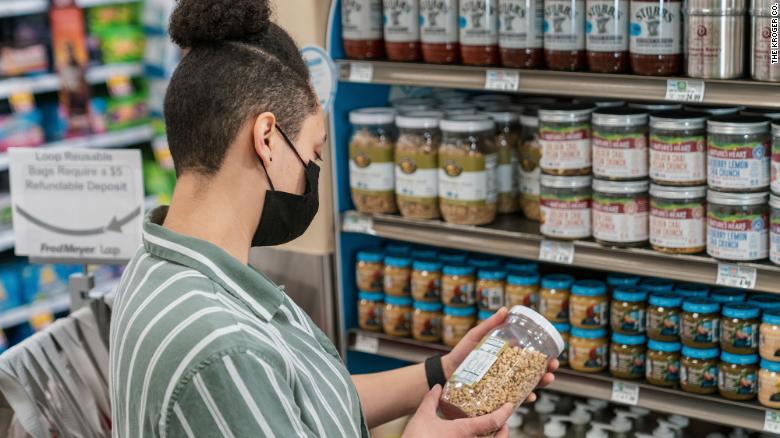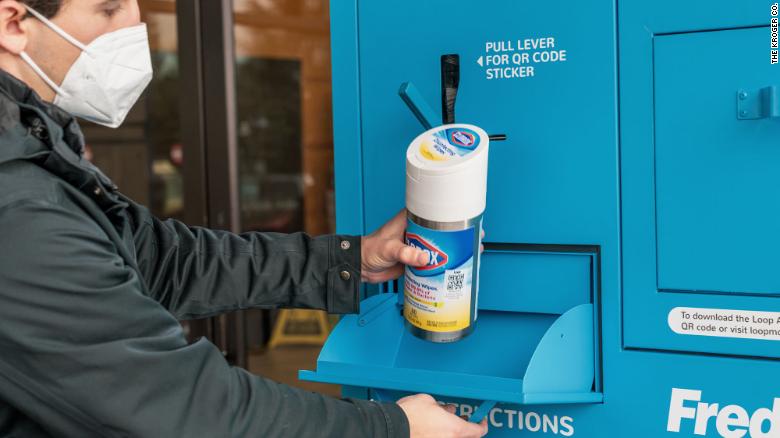Big businesses are some of the world's largest producers of waste, and they're under mounting pressure to craft strategies to address the issue. Experts advise that actions speak louder than words.
Brands face a tough question as consumer calls for sustainability pile up: How do large producers of waste craft an environmentally conscious strategy that's authentic and won't create backlash? Experts advise that actions speak louder than words, which might be a hard pill to swallow for engagement-minded marketers.
Campaigns against product materials like
single-use plastics have swelled in recent years alongside problems like the Great Pacific Garbage Patch, a mass of detritus floating between California and Hawaii that
recent estimates peg at being twice the size of Texas. Many marketers today are centering their strategies on social causes that resonate with young consumers, and have gravitated toward sustainability. Others are under mounting public pressure to change, including McDonald's, which earlier this summer announced it would reduce the amount of
plastic used in Happy Meal toys in response to a viral Change.org petition.
"It's really feeding into everybody's [communications]," Oliver Yonchev, U.S. managing director at the agency Social Chain, told Marketing Dive. "I would say 10-15% of what we do has some environmental messaging attached to it."
But the reality is that sustainable messaging comes with the
risk of sparking accusations of "green-washing," the idea of broadcasting positive environmental values and goals
without living them out. It's an insult that's been lobbed for decades, but one that's found fresh relevance as a sister term,
"woke-washing," gains traction in the purposeful branding era.
The key to navigating the sustainability minefield, according to experts, is a larger degree of self-awareness among brands, specifically knowing when to let sustainable decisions speak for themselves versus amplifying claims in marketing that may not always measure up. Sustainability also must ladder down into all areas of an organization, including on the operational and business-to-business end, which can be overlooked.
"To really survive the change curve here, brands need to break their internal silos to redesign product alongside
the other zero waste 5Rs — it's not a marketing [issue alone]," Kathryn Callow, a futurist and former Unilever global media manager, said in emailed comments to Marketing Dive, referencing the principles of refuse, reduce, reuse, recycle and rot.
"The list of brands in sustainability is endless[,] the list of brands making genuine impact is short," Callow said.
No time to waste
Even organizations renowned for their purpose-driven marketing have been accused of worsening the sustainability crisis. Procter & Gamble, Unilever, Mondelēz, Coca-Cola and PepsiCo were
cited among the top-10 corporate contributors to global plastic pollution in a study conducted by Greenpeace and the Break Free From Plastic Movement last year.
"The list of brands in sustainability is endless[,] the list of brands making genuine impact is short."
Kathryn Callow
Futurist
But any business operating at a significant scale is susceptible to these problems.
"The bigger you are, the more likely that you've not got the cleanest of records," Yonchev said. "That's just a universal truth."
Greater attention is being paid to sustainability as vocal generations like Gen Z and millennials
hold brands to higher standards. Nielsen recently found that 81% of surveyed global consumers across gender and generational lines felt
strongly that businesses should help better the environment.
"If a company's business model is inherently environmentally destructive, and its only effort to be sustainable stops at occasional philanthropy or window dressing, then today's consumers will see right through it," Christine Arena, founder and CEO of Generous, a marketing and production company focused on cause-led campaigns, said in emailed comments.
Ways to keep brands accountable are also proliferating in the social media age.
"Technology plays a big piece," Anthony Rossi, VP global business development at Loop, a startup arm of the private recycling firm TerraCylce, told Marketing Dive. "People are watching, and there are ways to track the companies to make sure they're on track with what they've promised."
Lawmakers, too, are taking notice:
City-level bans on single-use plastic itemslike straws and bags have picked up momentum in states like Florida, California and Washington.
"Businesses inherently want to serve their customers and be relevant," Yonchev said. "But equally, I think they're cognizant that legislation is changing state-by-state."
The threat of accelerating climate change, while more closely linked to carbon dioxide emissions, is also affecting the conversation around product sustainability. As with materials like single-use plastics,
corporations are some of the biggest polluters of the atmosphere, and yet few are going to the lengths needed to curb their impact, according to Arena.
"I'd like to see more CEOs speak out about climate change and more broadly advocate for climate solutions," Arena said. "It is both morally and economically risky for corporations to shirk this responsibility, and continue with business as usual."
Tangible change
Reactions to these trends are becoming more tangible: PepsiCo and Coca-Cola last month both cut ties to the Plastics Industry Association, a lobbying group representing manufacturers. They joined other massive companies like Clorox and Ecolab,
CNBC reported.
Aquafina, a PepsiCo water brand, plans to start packaging
some products in aluminum in 2020. The coffee giant Starbucks has started to phase out disposable plastic straws,
with plans to be rid of them in all stores next year.
A desire for more direct solutions has resulted in broader business initiatives that appear to be catching consumers' attention as well. After three years in development and extensive testing, Loop formally
launched earlier this yearwith initial partners including P&G and Nestlé, which are founding investors, along with Mondelēz, PepsiCo, Unilever, Danone and others.
"It's not some 2030 transition. That was a really important carrot to dangle in front of the brands."
Anthony Rossi
VP of global business development, Loop
The service offers sustainable packaging for an array of products from its partners, from diapers to razor blades, that are delivered, picked up and cleaned for reuse by Loop. The most important hook for the service was the baked-in infrastructure and immediacy of availability, according to Rossi.
"It's not some 2030 transition," Rossi said. "That was a really important carrot to dangle in front of the brands, that this exists today. I'm not asking you to wait six years to try something."
'Disney-fying' sustainability
Loop, which is now available in New York, New Jersey, Pennsylvania, Connecticut and Maryland, has more than 100 products available, with more added every week, per Rossi. Some partners, such as P&G, have worked with TerraCycle for years — relationships that helped to lay the groundwork for Loop's rollout.
"Operationally speaking, this is the biggest bite of the cake we've taken," Rossi said of Loop. "In its essence, what we're asking all of our partners to do is change the way that they operate, from the packaging they use to how they fill it, how it's being sold."
Early signs seem promising, even if the availability is small.
"The larger players getting involved with [startups] like [Loop] are welcome[,] but it's limited scale," Callow said.
Loop's employee headcount could match its parent organization, which has 21 offices around the globe, according to Rossi. Five thousand people are currently registered for the service, but 90,000 people are on a waiting list to join, he added.
"If the consumer isn't going to pay for this and want this, then none of it works," Rossi said. "The demand is there."
Marketing the service is still complex. Loop has a dedicated unit that works with dozens of partners to integrate the platform's messaging into their brand equity, communications and advertisements. But the heavy lifting still falls on those partners' shoulders, since Loop doesn't have the necessary degree of consumer-facing awareness.
"TerraCycle as a brand, it's not Disney," Rossi said. He compared the company to a firm like Intel, which supplies other companies with the technology to power the hardware consumers actually purchase.
"People know Häagen-Dazs a lot more than they know Loop," Rossi said. "We want the brands to tell the story because they have the reach."
Embedding authenticity
Beyond consumer-facing marketing and packaging, expectations to be more sustainable are manifesting in less publicly visible arenas. The Freeman Company, an agency that helps clients design and run corporate events, has seen consumer-facing brands push harder for sustainable offerings after feeling pressure to go green.
"There are so many sustainable decisions, as long as you make them at the beginning, and you're designing it in, it's embedded in your thinking," Melinda Kendall, Freeman's SVP of sustainability, told Marketing Dive. "Most sustainable decisions are cheaper; they involve doing less of something."
Newer digital tools open interesting avenues on the sustainability front. Tactics like digital signage, immersive technology and mobile apps not only reduce the use of materials like paper and plastic, but also naturally fit into a demand for convenience that was growing regardless of sustainability trends, according to Kendall.
"Most sustainable decisions are cheaper; they involve doing less of something."
Melinda Kendall
SVP of sustainability, Freeman Company
"A lot of the growth lately has been in virtual reality and augmented reality," Kendall said of events-planning. "The more we can use technology to make that experience realistic, it's a very sustainable path."
But like Callow, Kendall reinforced that a truly sustainable approach must be integrated across an organization internally, both for B2B and consumer-first brands. It's a cause that extends far beyond marketing and is more nuanced than many common definitions of the word suggest.
"Often times, when people think about sustainability or purpose and all of that, they think in terms of it equaling recycling. All I have to do is put things in recycling bins," Kendall said. "That's good — that's better than landfill — and it's the least sustainable thing you can do out of a set of like six."





